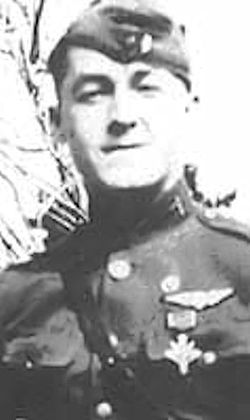Frank Kerr Hays | |
|---|---|
 Frank Kerr Hays. 1918 | |
| Born | November 3, 1896 |
| Died | February 29, 1988 (aged 91) |
| Buried | Arlington National Cemetery |
| Allegiance | United States |
| Branch | United States Army Air Service |
| Rank | Lieutenant |
| Unit | 13th Aero Squadron |
| Battles / wars | World War I |
| Awards | Distinguished Service Cross |
Lieutenant Frank Kerr Hays was a flying ace credited with six aerial victories during World War I. [1]
Hays was born to Charles and Bertha (Snider) Hays on November 3, 1896, in Louisville, Kentucky. Hays was living in Chicago when he joined the U.S. Army Air Service. [2] He reported to the 13th Aero Squadron on August 29, 1918, at the age of 21. On September 13, he won his first three victories in a melee in which he continued his attack after his guns jammed. He cleared them in time to rescue his Flight Commander from enemy attack. The feat earned him a Distinguished Service Cross (which can be seen on his portrait photo). [3] Hays would score three more times, his last win coming one week before the armistice ended the war. [2]
Hays married Beulah Stevens on March 29, 1924, in Chicago. They had two children, Frank Jr. and Joyce. [4] Hays died on February 29, 1988, in Monterey, California. [5] He is buried at Arlington National Cemetery. [6]